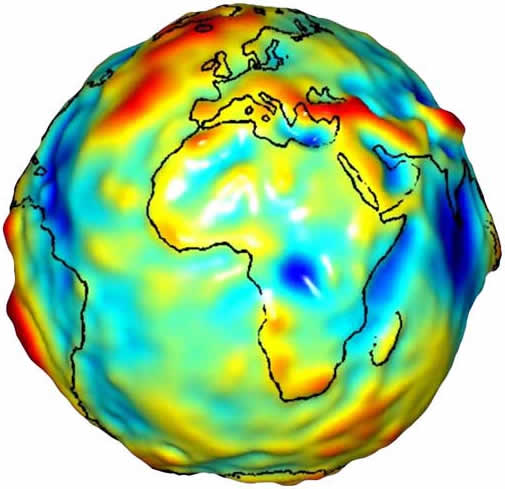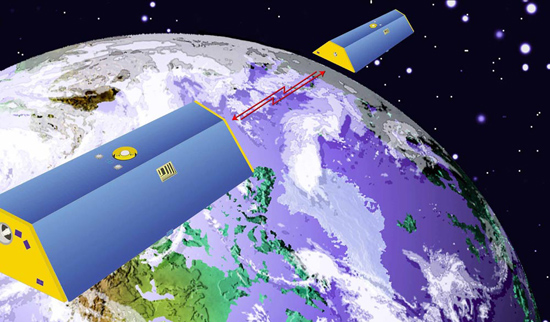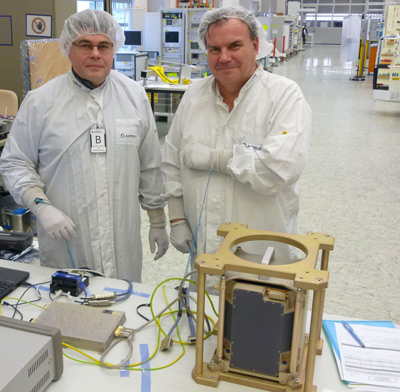The Grace mission and its ONERA accelerometers celebrate 15 years in orbit
The two satellites of the Grace* mission have been orbiting for 15 years. On board, ONERA's two indispensable accelerometers (one on board each satellite) have been operating without incident since the start of the mission.
The results of the environmental mission Grace* are so convincing that it will be renewed as from next year with its quasi-conforming replica Grace Follow On. Grace FO will be placed in orbit to take over from Grace, which has reached the end of its life. This, with new ONERA accelerometers on board, similar to the previous ones. Never change a winning team!

Representation of local gravity values on the surface of the globe from Grace measurements
(NASA / JPL image)
The Grace mission measurements provide very precise dynamic information regarding the earth's gravity field, and therefore regarding the distribution of masses and how they evolve in space and time. There are many environmental benefits: better knowledge of underground and surface water bodies, sea level monitoring, quantification of the ice melt at the poles, monitoring of the consequences of climate change, etc.
Grace’s principle: two identical satellites follow one another in a 500 km orbit, with a distance of some 220 km between them. These satellites are connected by a microwave link that makes it possible to measure their separation very precisely – down to a few microns. Each satellite is subject to Earth’s gravity, which depends on the amount of terrestrial mass in its vertical direction. A greater amount of mass has the effect of accelerating the satellite – i.e., "it falls faster". Conversely, a smaller ground mass slows down the satellite. Variations in the separation between the two satellites indicate differences in gravity on the surface of the globe. Multiple passes of the pair of satellites offer access to information on mass movements at different time scales.

Grace’s two satellites connected by their radio link (NASA / JPL image)
Rôle des accéléromètres ONERA : les accéléromètres Super Star fournis par les ingénieurs de l’ONERA au JPL permettent de mesurer la traînée résiduelle des satellites (ie le freinage dû à l’atmosphère résiduelle qui subsiste en orbite basse). La connaissance de cette traînée parasite est la garantie de la précision des mesures gravimétriques de Grace.

Bruno Christophe et Bernard Foulon, respectivement chef de projet
et expert instrument pour les accéléromètres de la prochaine mission Grace FO
Ces instruments ont été livrés au JPL* pour Grace en 2001. Le JPL a commandé en 2012 de nouveaux instruments pour un montant total de contrat qui avoisine les 11M€. Les deux modèles de vol ont été intégrés sur les satellites qui sont en cours de test par Airbus Allemagne, qui réalise les satellites. Le dernier modèle de rechange doit être livré d’ici le lancement SpaceX, qui devrait avoir lieu entre décembre 2017 et février 2018, en passager d'un lancement Iridium.
Ces 15 ans de vol de la mission Grace - et son prolongement Grace Follow On – sont l’occasion de souligner la confiance de la NASA dans les accéléromètres ultra-sensibles de l’ONERA.
—
*Grace – Gravity Recovery and Climate Experiment – est une mission spatiale environnementale, collaboration de la NASA et du DLR*
*JPL : Jet Propulsion Laboratory, centre de recherche NASA/Université Caltech
* DLR : agence spatiale allemande